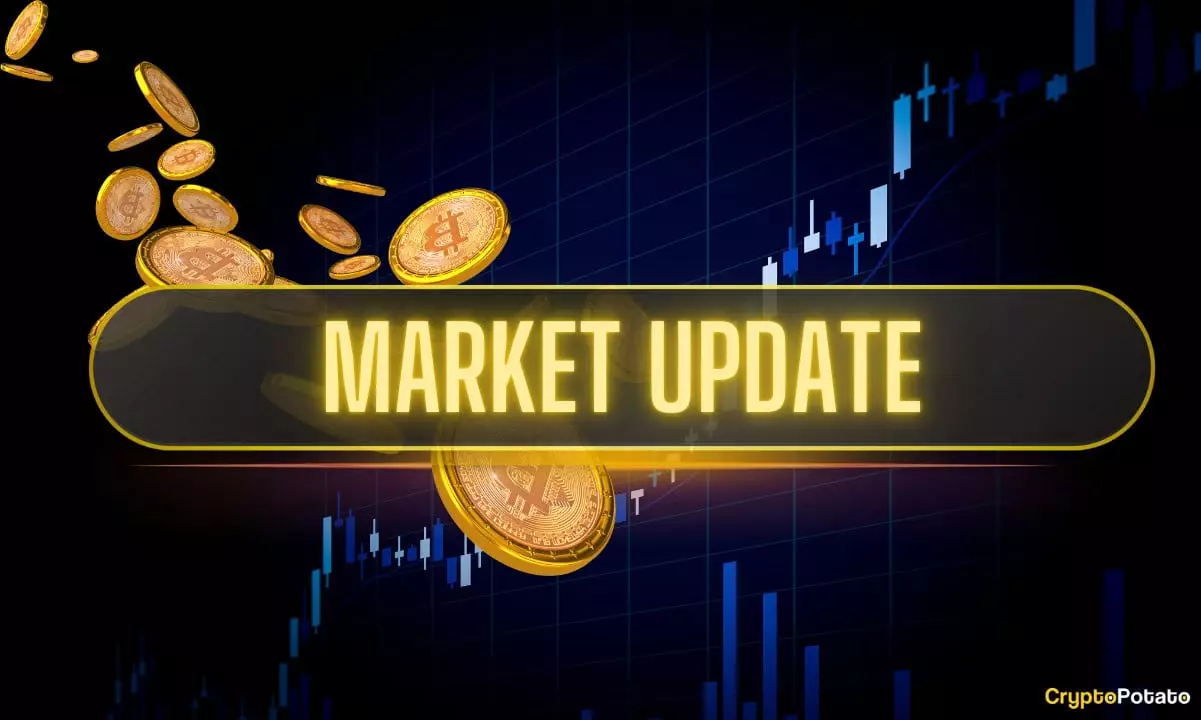In the world of cryptocurrencies, stability is often a mirage. Bitcoin’s recent trajectory exemplifies this volatile nature—an asset oscillating wildly between gains and losses, revealing underlying fragility that many underestimate. Last week’s price action showcased this perfectly: a brief jump to over $113,000 followed by a sharp correction beneath $107,500. These rapid shifts demonstrate that despite seemingly stable technical levels, market sentiment remains fragile, susceptible to external shocks and internal doubts. What’s noteworthy here isn’t just the movement itself but what it signals about the underlying market psychology; traders are jumping between extremes, driven more by fear and greed than by fundamentals.
This volatility is not accidental but symptomatic of a market caught between conflicting forces—speculative fervor, institutional interest, geopolitical anxieties, and macroeconomic policies. The upcoming Federal Reserve meeting could serve as a catalyst, either propelling Bitcoin into new heights or dragging it further into the abyss. Market participants are acutely aware that rate decisions have historically had profound impacts on crypto prices, but the uncertainty remains, fueling unprecedented swings. Investors should interpret these price moves not as isolated episodes but as part of a broader picture: a market trying to find its true direction amidst turbulence.
The Institutional Footprint: Are Major Players Orchestrating the Next Big Move?
The recent large-scale acquisitions by private institutions mark a significant turning point in the evolution of crypto adoption. Strategy and Metaplanet’s combined investment of hundreds of millions into Bitcoin highlights the increasing institutional confidence—yet this confidence remains a double-edged sword. On one hand, these strategic accumulations might signal a long-term bullish outlook; on the other, they could be part of a tactical play to shape market sentiment and liquidity flows. When firms like these amass thousands of BTC simultaneously, one must ask whether they’re contrarians betting against the broader retail crowd or orchestrators of future rallies.
In particular, the firm led by Saylor has taken a notable position, seemingly positioning itself as a market anchor. Large institutional buys tend to be a double-edged sword: they can stabilize the market but also artificially inflate prices, creating conditions ripe for volatility when profit-taking or panic ensues. The market’s current structure suggests that a handful of big players hold enough influence to sway sentiment significantly—raising questions about whether Bitcoin’s recent dips are mere noise or devices of market manipulation that some actors leverage for their agendas.
The Diverging Dawn: Cryptos Vs. Traditional Markets—A Prelude to Major Shifts?
One of the most intriguing phenomena this week is the stark divergence between the cryptocurrency market and traditional assets like sovereign equities and gold. While Bitcoin experienced turbulent swings, US equities and gold marked modest gains, hinting at an underlying decoupling. This disconnect could be a harbinger of something more profound: a shift in investment patterns driven by crypto’s unique narrative of decentralization and sovereignty.
The divergence suggests that institutions and sophisticated investors view cryptocurrencies as a hedge or alternative, especially amid macroeconomic uncertainties. If this trend continues, it could ignite a bullish impulse in Bitcoin and other digital assets, unlinked from the traditional risk-on or risk-off paradigms. Yet, skeptics argue that such divergence might be short-lived—an anomaly in a fragile ecosystem prone to sudden reversion. However, in a world increasingly driven by political and economic uncertainty, cryptocurrencies are shaping up as a refuge for those willing to bet against the status quo. This tilt in investor sentiment must be critically examined: are cryptos emerging as a hedge, or are they merely riding speculative waves that could crash once macro stability returns?
Future Outlook: Will the Next Bull Phase Reshape the Market or Lead to Disillusionment?
Bullish predictions are mounting—analysts forecast that the current cycle could conclude in just under two months. Such predictions hinge on historical analogs and technical patterns, yet they remain highly speculative. The question remains: are we witnessing the final throes of an overextended rally, or is this a decisive turning point for a more sustainable bull run? While some see the increasing institutional engagement and strategic acquisitions as the beginning of a new phase of legitimacy, others warn that the market may be overextended, vulnerable to swift corrections.
Furthermore, the narrative around Ethereum’s potential 54x surge underscores the speculative fervor permeating the space. Yet, such forecasts should be treated with skepticism—extreme heightening of expectations often precedes dramatic falls. Meanwhile, the ongoing regulatory developments, including the cooperation between US regulators and the bullish signals for crypto exchanges, add a complex layer: strong oversight can both legitimize and restrict market growth simultaneously.
In the end, investors are left in a precarious balance. Will this be the year that Bitcoin finally escapes its cyclical pattern of booms and busts, or are we on the brink of another disillusionment phase that erodes confidence and swells skepticism? Given the current macro backdrop and the underlying market mechanics, the future remains uncertain—yet one thing is clear: the crypto market’s next move will be orchestrated not just by price charts, but by the far-reaching political, economic, and institutional forces shaping the financial landscape.

